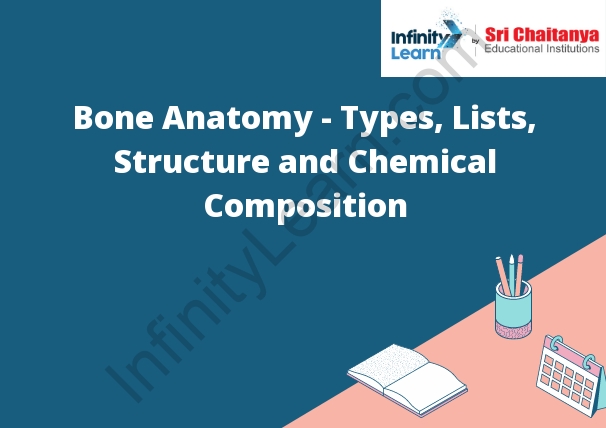Table of Contents
Introduction : Types of Bones
: Introduction; Types of Bones Bones are the hard, calcified tissues that form the skeleton of vertebrates. They are essential for providing support, protection, and movement to the body. There are two main types of bones: long bones and flat bones. Long bones are longer in length than they are in width, and they are typically found in the arms and legs. Flat bones are thin and wide, and they are typically found in the skull, ribs, and sternum.

Types of Bone Cells
Bone cells are the cells that make up bone tissue. There are several different types of bone cells, including osteoblasts, osteocytes, and osteoclasts.
Osteoblasts are the cells that produce new bone tissue. Osteocytes are the cells that maintain bone tissue. Osteoclasts are the cells that break down bone tissue.
Bones in the Human Body
There are 206 bones in the human body. Each bone has a name and a function. The skull houses and protects the brain and the spinal cord. The rib cage protects the heart and lungs. The bones of the arms and legs articulate with the pelvis and vertebrae to create a movable skeleton.
Long Bones:
Long bones are the bones of the arms and legs. They are long and slender, and they are designed for movement. The ends of long bones are called articulations, and they are covered in cartilage to help them move smoothly against each other. The long bones in the arms and legs are held together by ligaments, and they are attached to muscles by tendons.
Short Bones:
Short bones are bones that are small and compact. They are found in the hands and feet and are responsible for the movement of the limbs. Short bones are very strong and are able to withstand a lot of stress. They are also very lightweight, which allows for easy movement.
Flat Bones:
Flat bones are bones that are thin and flat in shape. They are found in areas of the body where there is little or no muscle. The bones that make up the cranium ( skull) are the best example of flat bones.
Other examples of flat bones include the ribs, the clavicle (collarbone), and the scapula (shoulder blade). Flat bones are strong and relatively lightweight. They are also good at protecting organs in the body.
Irregular Bones:
Irregular bones are bones that do not have a specific shape. They are often found in the skull and spine.
Sesamoid Bones:
These are two small bones that are located on the underside of the big toe. They are usually not visible on an x-ray.
Structure and the Chemical Composition of the Bone
Bone is a composite material consisting of an organic matrix and inorganic salts. The organic matrix is composed of proteins (collagen and elastin), glycoproteins, and proteoglycans. These molecules are synthesized by the cells that line the bone surface (osteoblasts) and the cells that line the bone marrow cavity (hematopoietic cells). The inorganic salts are composed of calcium and phosphate. These salts are deposited in the organic matrix by the osteoblasts.
The organic matrix and the inorganic salts are arranged in a repeating unit called a mineralized matrix. The mineralized matrix is composed of hydroxyapatite, a mineral that is composed of calcium, phosphate, and water. The mineralized matrix is very hard and strong. The strength of the bone depends on the thickness of the mineralized matrix and the density of the hydroxyapatite crystals.
List of Bones in the Human Body
There are 206 bones in the human body.
Spine or the Vertebral Column
The spine, or vertebral column, is a series of small bones, called vertebrae, that run from the base of the skull to the pelvis. The spine is responsible for protecting the spinal cord, a bundle of nerves that runs down the back. The spinal cord carries messages between the brain and the rest of the body. The spine also helps to support the body.
Chest or the Thorax
The thorax is the part of the body between the neck and the abdomen. It contains the heart and lungs.
Skull
The skull is a bony structure that forms the head of the skeleton in humans. It is composed of two parts: the cranium and the mandible. The cranium protects the brain, and the mandible supports the teeth and jaw.
Arm and the Hand Bone Anatomy
The arm is made up of three bones: the humerus, the ulna, and the radius. The humerus is the upper arm bone, the ulna is the forearm bone, and the radius is the thumb bone.
Bones of Pelvis
The bones of the pelvis are the hip bones. The hip bones are made up of three bones: the ilium, ischium, and pubis.
Legs and the Foot Bone Anatomy
The bones in the leg are the femur, tibia, fibula, and patella. The femur is the longest and strongest bone in the body. It is the bone in the upper leg that attaches to the hip bone. The tibia is the shinbone and is located on the front of the leg. The fibula is the smaller bone located on the outside of the tibia. The patella is the kneecap.







